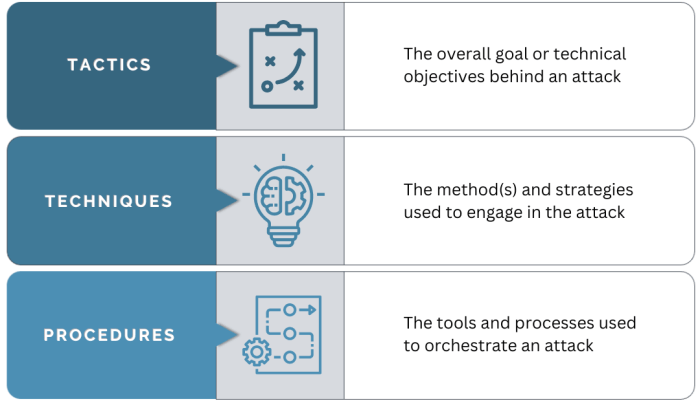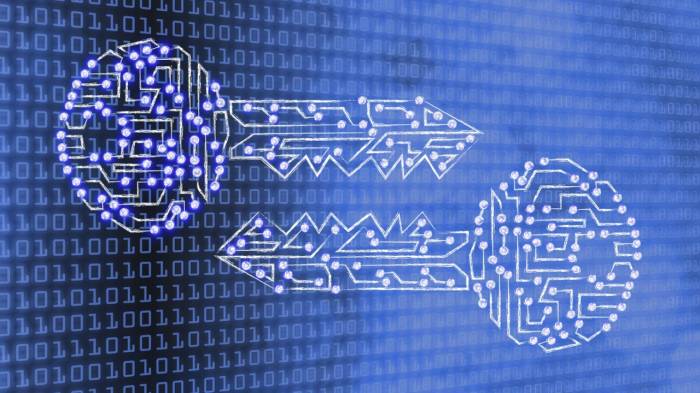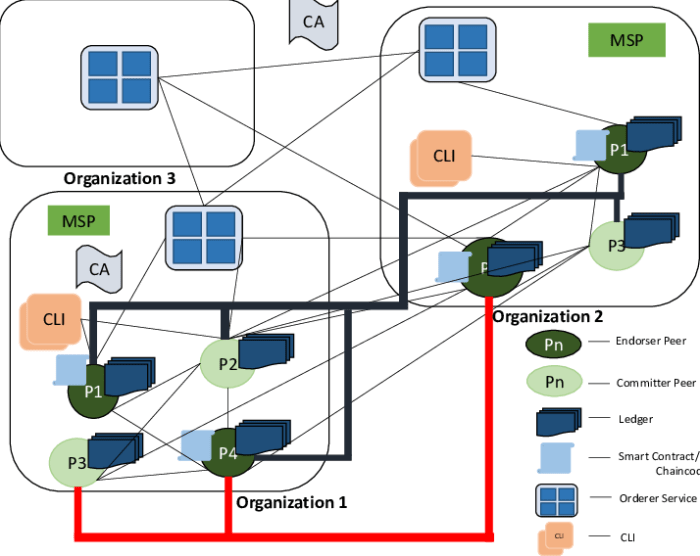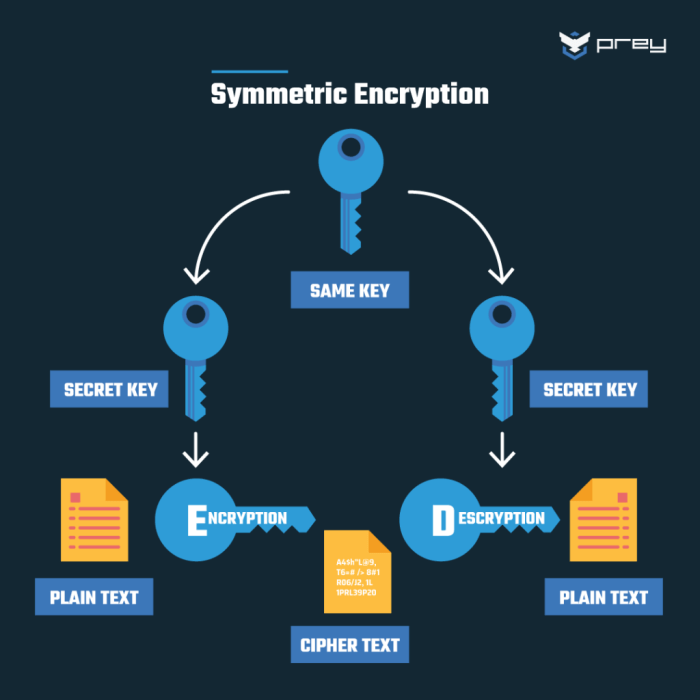Crypto Strategies for Server Protection are crucial in today’s digital landscape. This guide delves into the multifaceted world of cryptographic techniques, blockchain technology, and secure remote access methods to fortify your servers against ever-evolving threats. We’ll explore how asymmetric encryption, digital signatures, and robust hashing algorithms contribute to a robust security posture. Furthermore, we’ll examine the potential of blockchain for immutable logging and the critical role of multi-factor authentication in preventing unauthorized access.
This comprehensive approach will empower you to build a resilient and secure server infrastructure.
From implementing public key infrastructure (PKI) to securing server-side applications and responding effectively to cryptographic attacks, this guide provides practical strategies and best practices. We’ll cover topics such as encrypting remote connections using VPNs and SSH, protecting sensitive data with encryption libraries, and designing secure APIs. Understanding and implementing these strategies is vital for maintaining data integrity and ensuring the continued operation of your critical systems.
Cryptographic Techniques for Server Security
Server security relies heavily on cryptographic techniques to protect data confidentiality, integrity, and authenticity. These techniques, ranging from asymmetric encryption to hashing algorithms, form the bedrock of a robust security infrastructure. Understanding and implementing these methods correctly is crucial for mitigating various cyber threats.
Asymmetric Encryption in Securing Server Communications
Asymmetric encryption, also known as public-key cryptography, utilizes a pair of keys: a public key for encryption and a private key for decryption. The public key can be widely distributed, while the private key must remain strictly confidential. In securing server communications, the server possesses a private key and makes its corresponding public key available to clients. Clients encrypt their data using the server’s public key, ensuring only the server, with its private key, can decrypt it.
This prevents eavesdropping and ensures confidentiality during data transmission. This is commonly used in protocols like TLS/SSL for secure web traffic (HTTPS). For example, when a user connects to an HTTPS website, the browser retrieves the website’s public key and uses it to encrypt the communication.
Digital Signatures for Server Authentication
Digital signatures provide a mechanism for server authentication, verifying the identity of the server and ensuring data integrity. A digital signature is created by hashing the data and then encrypting the hash using the server’s private key. The client can then verify the signature using the server’s public key. If the verification process is successful, it confirms that the data originated from the server and hasn’t been tampered with.
This process prevents man-in-the-middle attacks where an attacker impersonates the server. The widely used X.509 digital certificates leverage this principle for secure communication. A mismatch in the signature verification process would indicate a compromised server or malicious intervention.
Comparison of Hashing Algorithms for Data Integrity
Hashing algorithms generate a fixed-size string (hash) from an input data of any size. Changes in the input data, however small, result in a drastically different hash value. This property is vital for ensuring data integrity. Several hashing algorithms exist, each with varying strengths and weaknesses. SHA-256 and SHA-3 are widely used, offering strong collision resistance.
MD5, while historically popular, is now considered cryptographically broken due to its vulnerability to collision attacks. The choice of hashing algorithm depends on the security requirements and the potential risk of collision attacks. For critical systems, using more robust algorithms like SHA-256 or SHA-3 is crucial. A table summarizing key differences would be beneficial:
| Algorithm | Output Size (bits) | Security Status |
|---|---|---|
| MD5 | 128 | Cryptographically broken |
| SHA-256 | 256 | Secure |
| SHA-3 (e.g., SHA3-256) | 256 | Secure |
Symmetric Encryption for Protecting Sensitive Data at Rest
Symmetric encryption employs a single secret key for both encryption and decryption. This approach is generally faster than asymmetric encryption, making it suitable for protecting large volumes of data at rest. Advanced Encryption Standard (AES) is a widely used symmetric encryption algorithm, offering various key sizes (128, 192, and 256 bits). Implementing this involves encrypting sensitive data before storing it on the server and decrypting it when needed.
Proper key management is critical, as compromising the key compromises the data. A well-designed system would incorporate robust key generation, storage, and rotation mechanisms to mitigate risks. For instance, a server might use AES-256 to encrypt database files before storing them, requiring the decryption key to access the data.
Implementing Public Key Infrastructure (PKI) for Server Authentication, Crypto Strategies for Server Protection
PKI is a system for creating, managing, distributing, using, storing, and revoking digital certificates and managing public-key cryptography. Implementing PKI for server authentication involves several steps:
- Generate a Certificate Signing Request (CSR): This involves generating a private key and a CSR containing the public key and server information.
- Obtain a Digital Certificate: Submit the CSR to a Certificate Authority (CA) to obtain a digital certificate that binds the public key to the server’s identity.
- Install the Certificate: Install the certificate on the server, making it accessible to clients.
- Configure Server Software: Configure the server software (e.g., web server) to use the certificate for secure communication.
- Monitor and Revoke Certificates: Regularly monitor the certificates and revoke them if compromised.
This process ensures that clients can verify the server’s identity and establish a secure connection. Let’s Encrypt is a well-known example of a free and automated CA that simplifies the process of obtaining and managing SSL/TLS certificates.
Blockchain Technology for Server Protection
Blockchain technology, initially known for its role in cryptocurrencies, offers compelling potential for enhancing server security. Its inherent features—decentralization, immutability, and transparency—provide a robust foundation for building more resilient and secure server infrastructures. This section explores the applications of blockchain in securing server environments, highlighting its benefits, vulnerabilities, and practical considerations.
Secure Server Logging and Auditing with Blockchain
Blockchain’s immutable ledger provides a tamper-proof record of all server activities. Each transaction, including system changes, access attempts, and security events, is recorded as a block, cryptographically linked to previous blocks, creating a chronological and verifiable audit trail. This eliminates the possibility of altering or deleting logs, ensuring accountability and simplifying compliance audits. For example, a financial institution could use a blockchain-based logging system to track all access to sensitive customer data, providing irrefutable evidence of compliance with data protection regulations.
The transparency of the blockchain also allows for easier identification of malicious activities and faster incident response.
Decentralized Networks for Enhanced Server Resilience and Availability
A decentralized blockchain network distributes server functionalities across multiple nodes, increasing resilience against single points of failure. If one server fails, others continue to operate, maintaining service availability. This distributed architecture also enhances resistance to DDoS attacks, as the attack surface is significantly broadened and the attacker needs to compromise numerous nodes simultaneously. Consider a content delivery network (CDN) leveraging blockchain to manage and distribute content.
The decentralized nature ensures high availability and fault tolerance, even under heavy load or targeted attacks.
Immutable Data Storage on Servers Using Blockchain
Blockchain’s immutability makes it ideal for storing critical server data that requires absolute integrity. Once data is written to the blockchain, it cannot be altered or deleted, preventing data breaches and ensuring data integrity over time. This is particularly useful for storing sensitive configurations, cryptographic keys, and software updates. For instance, a software company could use a blockchain to store software versions and deployment records, creating an undeniable audit trail of software releases and updates, preventing unauthorized changes or rollbacks to vulnerable versions.
Potential Vulnerabilities and Mitigation Strategies in Blockchain-Based Server Protection
While blockchain offers significant security advantages, it’s not without vulnerabilities. 51% attacks, where a malicious actor controls a majority of the network’s computing power, remain a concern, particularly in smaller, less decentralized networks. Smart contract vulnerabilities can also lead to security breaches. Mitigation strategies include employing robust consensus mechanisms, like Proof-of-Stake, which make 51% attacks more difficult and expensive.
Thorough smart contract audits and penetration testing are crucial to identify and address vulnerabilities before deployment. Furthermore, integrating blockchain with other security measures, such as multi-factor authentication and intrusion detection systems, creates a layered security approach.
Private vs. Public Blockchains for Server Security Applications
The choice between private and public blockchains depends on the specific security requirements. Public blockchains offer transparency and decentralization but may compromise data privacy. Private blockchains provide greater control over access and data privacy but sacrifice some of the decentralization benefits. A financial institution might prefer a private blockchain to protect sensitive customer data, while a public blockchain could be suitable for managing a transparent, publicly auditable software supply chain.
The trade-offs between security, privacy, and decentralization must be carefully considered when selecting the appropriate blockchain architecture.
Secure Remote Access and Management using Cryptography
Securing remote access to servers is paramount for maintaining data integrity and preventing unauthorized access. Robust cryptographic techniques are essential for achieving this security. This section details methods for encrypting remote connections, implementing multi-factor authentication, managing access keys and certificates, and responding to unauthorized access attempts.
Encrypting Remote Server Connections
Secure remote access relies heavily on encryption protocols to protect data transmitted between the client and the server. Two prevalent methods are Virtual Private Networks (VPNs) and Secure Shell (SSH). VPNs create a secure, encrypted tunnel over a public network, shielding all data transmitted within the tunnel. This is particularly useful for accessing multiple servers or resources from a single point.
SSH, on the other hand, provides a secure channel for command-line access and file transfer, utilizing strong encryption algorithms like AES to protect data in transit. Both VPNs and SSH are critical for preventing eavesdropping and man-in-the-middle attacks. Proper configuration of these technologies, including strong encryption ciphers and key exchange methods, is vital for optimal security.
Robust crypto strategies for server protection are crucial in today’s threat landscape. Understanding the nuances of encryption, hashing, and digital signatures is paramount, and a deep dive into practical applications is essential. For a comprehensive overview of these techniques in action, check out this excellent resource on Server Security Tactics: Cryptography in Action , which will help you build more secure server infrastructures.
Ultimately, effective crypto strategies are the bedrock of any robust server protection plan.
Multi-Factor Authentication Implementation
Multi-factor authentication (MFA) significantly enhances security by requiring users to provide multiple forms of authentication to verify their identity. This adds an extra layer of protection beyond traditional passwords. A common MFA approach combines something the user knows (password), something the user has (security token), and/or something the user is (biometric data). Implementing MFA for remote server access involves integrating MFA-capable authentication systems with the VPN or SSH client.
This might involve using time-based one-time passwords (TOTP) generated by applications like Google Authenticator or hardware security keys. The added complexity of MFA makes it considerably harder for attackers to gain unauthorized access, even if they obtain a password.
Comparison of Authentication Methods
The following table compares various authentication methods commonly used for securing remote server access:
| Authentication Method | Security | Usability | Notes |
|---|---|---|---|
| Passwords | Low (susceptible to phishing, brute-force attacks) | High | Should be strong, unique, and regularly changed. |
| Time-Based One-Time Passwords (TOTP) | Medium | Medium | Requires a separate authenticator app; susceptible to SIM swapping attacks. |
| Hardware Security Keys (e.g., U2F, FIDO2) | High | Medium | More resistant to phishing and online attacks; requires physical possession. |
| Biometrics (fingerprint, facial recognition) | Medium to High (depending on implementation) | High | Can be spoofed; privacy concerns. |
Secure Management of Server Access Keys and Certificates
Proper management of access keys and certificates is crucial for maintaining the security of remote access. Keys and certificates should be stored securely, using a robust key management system (KMS). A KMS allows for centralized control, encryption, and rotation of keys, reducing the risk of compromise. Access to the KMS itself should be strictly controlled, using MFA and role-based access control.
Regular key rotation, with automated processes, minimizes the impact of potential breaches. Furthermore, certificates should have limited validity periods and should be revoked immediately if compromised. Storing keys and certificates on a secure hardware security module (HSM) offers an additional layer of protection.
Detecting and Responding to Unauthorized Access Attempts
Monitoring server logs for suspicious activity is crucial for detecting unauthorized access attempts. This includes monitoring login attempts, failed authentication events, and unusual network traffic patterns. Implementing intrusion detection and prevention systems (IDPS) can help to automatically detect and respond to such events. Regular security audits and vulnerability scans are also essential for identifying and mitigating potential weaknesses.
In the event of a suspected or confirmed unauthorized access, immediate action should be taken, including isolating the affected system, changing all compromised credentials, and conducting a thorough investigation to determine the extent of the breach. Regular security awareness training for personnel is also critical to minimizing the risk of insider threats.
Cryptography in Server-Side Applications: Crypto Strategies For Server Protection
Protecting sensitive data within server-side applications is paramount for maintaining data integrity and user trust. This requires a multi-layered approach incorporating various cryptographic techniques at different stages of data handling, from storage to transmission. Failing to implement robust security measures can lead to significant financial losses, reputational damage, and legal repercussions.
Best Practices for Protecting Sensitive Data in Server-Side Applications
Implementing strong encryption is fundamental. Data at rest should be encrypted using robust algorithms like AES-256, and data in transit should utilize TLS/SSL with strong cipher suites. Regular security audits and penetration testing are crucial to identify vulnerabilities. Furthermore, employing the principle of least privilege restricts access to sensitive data to only authorized personnel and applications. Input validation and sanitization help prevent injection attacks, a common vector for data breaches.
Finally, robust logging and monitoring systems provide insights into application activity, facilitating the early detection of suspicious behavior.
Encryption Libraries in Popular Programming Languages
Various encryption libraries are available for common programming languages. For Python, the `cryptography` library provides a comprehensive suite of cryptographic tools, including AES, RSA, and hashing algorithms. Example: Using AES-256 for encryption:
“`pythonfrom cryptography.fernet import Fernetkey = Fernet.generate_key()f = Fernet(key)message = b”My secret message”encrypted_message = f.encrypt(message)decrypted_message = f.decrypt(encrypted_message)“`
Java developers can leverage the `javax.crypto` package, offering similar functionalities. Node.js relies on libraries like `crypto` for various cryptographic operations. These libraries simplify the integration of encryption into server-side applications, ensuring secure data handling. The choice of library depends on the specific needs and the programming language used.
Secure Tokenization for Protecting Sensitive Data
Tokenization replaces sensitive data, such as credit card numbers, with non-sensitive substitutes called tokens. This allows applications to process payments and other sensitive operations without directly handling the original data. If a breach occurs, the exposed tokens are useless without the decryption key, protecting the original sensitive information. Tokenization systems typically involve a tokenization engine that generates and manages tokens, ensuring data integrity and compliance with regulations like PCI DSS.
For example, a payment gateway might use tokenization to store customer credit card details, reducing the risk of data exposure.
Designing a Secure API using Cryptographic Techniques
A secure API should employ HTTPS for all communication, ensuring data is encrypted in transit. API keys and access tokens should be properly managed and rotated regularly to mitigate the impact of compromised credentials. Input validation and output encoding are crucial to prevent injection attacks and cross-site scripting (XSS) vulnerabilities. Rate limiting helps prevent brute-force attacks. Implementing robust authentication mechanisms, such as OAuth 2.0, provides a secure way for clients to authenticate and authorize access to API resources.
The API design should follow the principle of least privilege, granting only necessary access to resources.
Methods for Securing API Keys and Access Tokens
Several methods exist for securing API keys and access tokens. Storing them in environment variables or dedicated secret management services is preferred over hardcoding them directly in the application code. Using short-lived tokens and implementing token rotation mechanisms significantly reduces the risk of compromised credentials. JWT (JSON Web Tokens) are commonly used for authentication and authorization, offering a standardized and secure way to exchange information between the client and the server.
Multi-factor authentication (MFA) adds an extra layer of security, requiring users to provide multiple forms of authentication before gaining access. Regular auditing and monitoring of API usage help detect and respond to suspicious activity.
Responding to Cryptographic Attacks on Servers
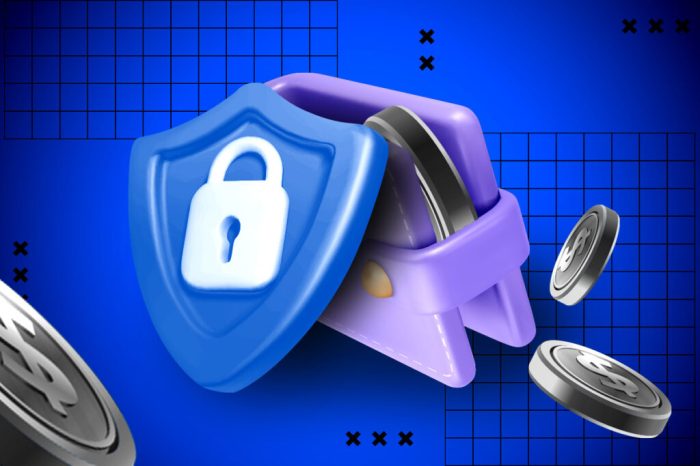
Protecting server infrastructure from cryptographic attacks requires a proactive and multi-layered approach. A robust security posture includes not only implementing strong cryptographic techniques but also developing comprehensive strategies for detecting, mitigating, and recovering from attacks that exploit vulnerabilities in these systems. This section details crucial aspects of responding to such incidents.
Common Cryptographic Vulnerabilities Affecting Server Security
Weak or improperly implemented cryptography presents significant risks to server security. Common vulnerabilities include the use of outdated or insecure cryptographic algorithms (like DES or older versions of AES), insufficient key lengths, flawed key management practices (leading to key compromise or reuse), and insecure random number generators (RNGs) resulting in predictable cryptographic keys. Improper implementation of cryptographic protocols, such as SSL/TLS, can also create vulnerabilities, allowing attackers to intercept or manipulate data.
Furthermore, the use of hardcoded cryptographic keys directly within server-side applications presents a significant single point of failure. If an attacker gains access to the server’s codebase, these keys are readily available for exploitation.
Methods for Detecting and Mitigating Brute-Force Attacks Against Server Authentication Systems
Brute-force attacks attempt to guess passwords or cryptographic keys by systematically trying various combinations. Detection involves monitoring login attempts, identifying unusual patterns (e.g., numerous failed logins from a single IP address), and analyzing server logs for suspicious activity. Mitigation strategies include implementing rate limiting to restrict the number of login attempts from a given IP address within a specific timeframe, employing multi-factor authentication (MFA) to add an extra layer of security, and using strong password policies that mandate complex and unique passwords.
Additionally, leveraging techniques like account lockouts after a certain number of failed login attempts is essential. Implementing a robust intrusion detection system (IDS) can also aid in detecting and alerting on suspicious activity indicative of a brute-force attack.
Recovering from a Data Breach Involving Compromised Cryptographic Keys
A data breach involving compromised cryptographic keys requires a swift and coordinated response. The first step is to contain the breach by isolating the affected server and preventing further access. Next, all compromised keys must be immediately revoked and replaced with new, securely generated keys. This necessitates updating all affected systems and applications that utilize these keys.
A thorough forensic investigation should be conducted to determine the extent of the breach, identify the source of the compromise, and assess the impact on sensitive data. Notification of affected parties, as required by relevant regulations (e.g., GDPR), is crucial. Post-incident analysis is vital to understand the root cause of the breach and implement corrective measures to prevent future occurrences.
This might involve reviewing security policies, improving key management practices, and enhancing security monitoring.
Best Practices for Regularly Updating and Patching Server-Side Cryptographic Libraries
Regularly updating and patching server-side cryptographic libraries is paramount for maintaining a strong security posture.
- Establish a rigorous patching schedule that aligns with the release cycles of cryptographic libraries and security updates.
- Implement automated update mechanisms to streamline the patching process and minimize downtime.
- Thoroughly test updates in a staging environment before deploying them to production servers to ensure compatibility and functionality.
- Maintain an inventory of all cryptographic libraries used on servers and track their versions to ensure timely updates.
- Prioritize patching known vulnerabilities immediately upon their discovery to minimize the window of exposure.
Incident Response Plan for a Successful Cryptographic Attack on a Server
A comprehensive incident response plan is crucial for effectively handling a successful cryptographic attack.
- Preparation: Define roles and responsibilities, establish communication channels, and create a documented incident response plan that Artikels the steps to be taken in the event of an attack.
- Detection: Implement robust monitoring and alerting systems to detect suspicious activity promptly.
- Analysis: Conduct a thorough investigation to determine the extent of the compromise, identify the attacker’s methods, and assess the impact.
- Containment: Isolate the affected server to prevent further damage and data exfiltration.
- Eradication: Remove the malware or exploit and restore the server to a secure state.
- Recovery: Restore data from backups and resume normal operations.
- Post-Incident Activity: Conduct a post-incident review to identify lessons learned and improve security measures.
Final Summary
Securing your servers requires a multi-layered approach that combines robust cryptographic techniques with proactive security measures. By understanding and implementing the strategies Artikeld in this guide—from leveraging asymmetric encryption and blockchain technology to employing secure remote access protocols and robust incident response plans—you can significantly enhance your server’s resilience against cyber threats. Remember that continuous vigilance and regular updates are paramount in maintaining a strong security posture in the ever-changing threat landscape.
Proactive security is not just about reacting to breaches; it’s about building a system that is inherently difficult to compromise.
Frequently Asked Questions
What are the key differences between symmetric and asymmetric encryption?
Symmetric encryption uses the same key for both encryption and decryption, offering faster speeds but requiring secure key exchange. Asymmetric encryption uses separate public and private keys, providing better key management but slower performance.
How often should server cryptographic libraries be updated?
Regularly update cryptographic libraries as soon as security patches are released. The frequency depends on the specific library and the severity of identified vulnerabilities, but aiming for frequent updates (at least quarterly) is a good practice.
What are some common indicators of a successful cryptographic attack?
Unusual login attempts, performance degradation, unauthorized access to data, and inconsistencies in logs are all potential indicators of a successful cryptographic attack.
Can blockchain completely eliminate server vulnerabilities?
No, blockchain enhances security but doesn’t eliminate all vulnerabilities. Weaknesses can still exist in the implementation, network infrastructure, or smart contracts used with blockchain solutions.

